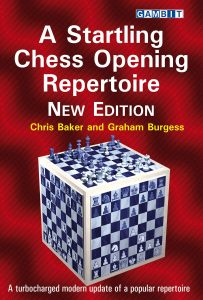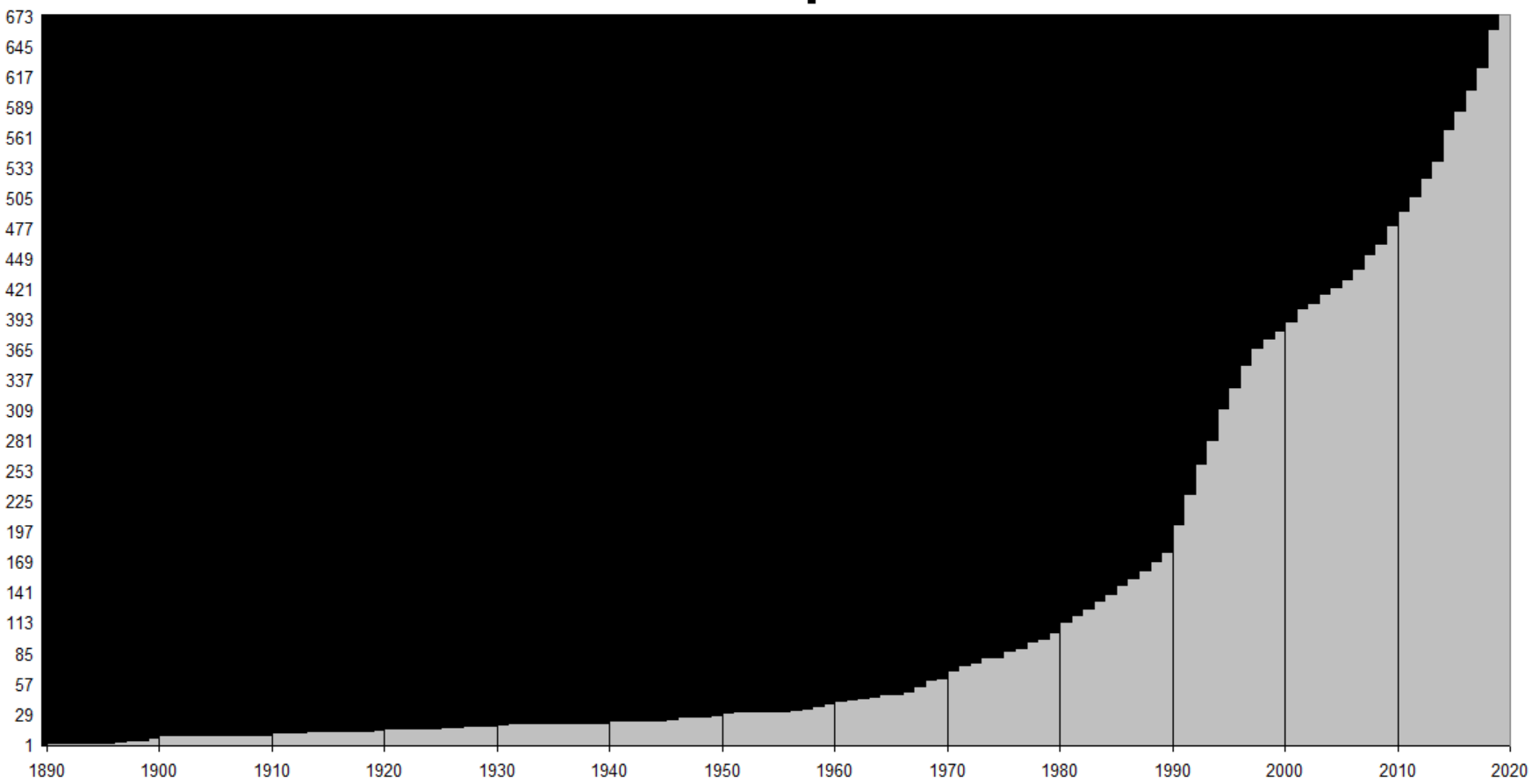A Startling Chess Opening Repertoire : Chris Baker and Graham Burgess

FIDE Master Graham Burgess needs no introduction to readers of English language chess books ! Minnesota, USA based, Graham has authored more than twenty five books and edited at least 250 and is editorial director of Gambit Publications Ltd. In 1994 Graham set a world record for marathon blitz playing and has been champion of the Danish region of Funen !
We previously reviewed Chess Opening Traps for Kids also by Graham Burgess.

This new book is an extensive rewrite and update of the original (1998) edition by IM Chris Baker.

Baker and Burgess have provided a complete repertoire for the White player based around 1.e4 and the Max Lange Attack with suggested lines for White against each and every reasonable reply from Black. Logically, the content is organised based on the popularity of Black’s first move and therefore the order is
- 1…e5 2.Nf3
- 2…Nc6
- 2…Nf6
- 2…d6 (and Modern Philidor)
- 2…f5
- 1…c5
- 1…e6
- 1…c6
- 1…d6 & g6
- 1…Nf6
- 1…d5 (we might have put the Scandinavian higher up the pecking order but that is a matter of opinion)
- 1…Nc6
- Odds & Ends
- Elephant Gambit
- St. George
- Owen’s Defence
and for each Black defence the authors have selected sharp and challenging lines for White that will definitely give Black something to think about. We have sampled some of these lines and confirm that they are variations that Black needs to tread very carefully in to stay on the board. They are all sound and not based on “coffee house gambits” or cheap traps.
Who is the intended audience of this book ? Well, clearly anyone who currently plays 1.e4 or is contemplating adding 1. e4 to their repertoire. Also, anyone who faces 1.e4 (and that is everyone who plays chess!) should be aware of of what might land on their board when they are least expecting it. As Robert Baden Powell would advise : “Be prepared !”

Unfortunately, We do not possess a copy of the original 1998 edition and we were curious as to the extent of the changes. The Introduction states :
“For this new edition, I have sought to retain the spirit and aims of the original book, while bringing the content fully up-to-date, making a repertoire that will work well in 2019 and for years to come.
In a sense it is basically a new book: wherever anything needed correcting, updating, replacing or adding, I have done so. Where material is unaltered, this is because it passed verification and nothing needed to be added. … the overall recommendations were not changed unless this was necessary. Some lines covered in this book basically didn’t exist in 1998, so I needed to decide what line against them was most in keeping with the rest of the repertoire.”
We followed up on the above and contacted the author (GB) receiving a very helpful reply as follows :
Something like 70% of the content is either new or modified so much as to be basically new. Examples of lines that essentially didn’t exist in 1998 include “Tiger’s Modern” and the 3…Qd6 Scandinavian. Lines where the old recommendation has been replaced (since it was fundamentally flawed in some way) include the Modern Philidor and the Two Knights French with 3…d4 (I briefly explain the switch from 5 c3 to 5 b4).
The whole Three Knights/Four Knights section in Chapter 10 is new, both to fill the repertoire hole and to provide an alternative vs the Petroff to those who don’t like the Cochrane.
But, almost every part of the book features fundamental changes. Little remains of the original Part 3 of the Sicilian chapter (other than the basic theme of a fianchetto set-up), for instance.
My aim was to be faithful to the aims of the original book, but only to the specifics where they still work, or where there isn’t a new possibility that fits better with the repertoire.
and furthermore :
I have attached a graph showing the years the game references come from. The number for each year shows the cumulative total up to that year. Though this doesn’t really tell the full story, as I cited game references in a very sparing way, only using them when there seemed a real purpose in doing so.
and here is that graphic (courtesy of Graham) :

Clearly we are not going to reveal all of the suggestions here as that really would be a spoiler. Suffice to say that players of the Black lines would be wise to be aware of B&Bs suggestions ! We would recommend that any of the lines are tried out in off-hand games and on-line before important games and some of the more critical ones will need a degree of memorization to a fair few moves deep.
In the BCN office we have a Caro-Kann expert who confirmed that B&Bs suggestions for White are most definitely on the cutting edge and were checked with Stockfish 10. Indeed a team mate tried the suggestion for White in a league match and the opponent (a Caro-Kann player of more than forty years) had a catastrophic loss on his hands in short order.
As a taster here is a suggested line from the book that is full of pitfalls for Black :
We consulted an experienced (and successful) player of the Elephant Gambit* and was told that he had never faced White’s fifth move suggestion in more than twenty years and that it was an excellent suggestion worthy of respect. *Some might know this as the Queen’s Pawn Counter Gambit (1.e4 e5 2.Nf3 d5!?)
In summary, this second edition is a substantial update and improvement of a first edition well received and we recommend it heartily to anyone who wants to sharpen and refresh their 1.e4 repertoire and anyone who faces 1.e4. You will not be disappointed and you might be ready for someone’s preparation and shock tactics !
John Upham, Cove, Hampshire, December 13th 2019

Book Details :
- Hardcover : 192 pages
- Publisher: Gambit Publications Ltd; 2nd New edition edition (22 Sept. 2019)
- Language: English
- ISBN-10: 1911465325
- ISBN-13: 978-1911465324
- Product Dimensions: 17.1 x 1.5 x 24.8 cm
Official web site of Gambit Publications Ltd.

